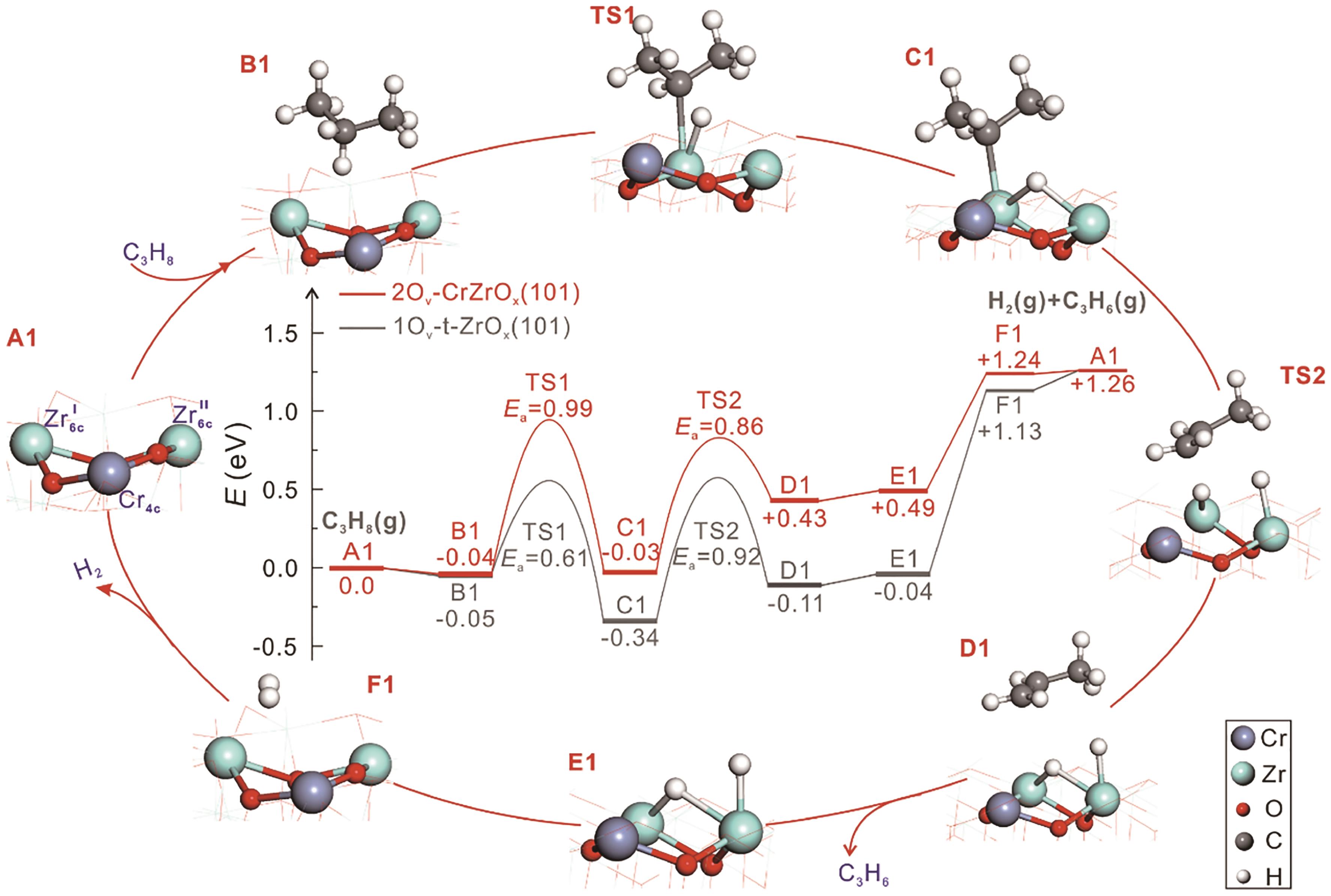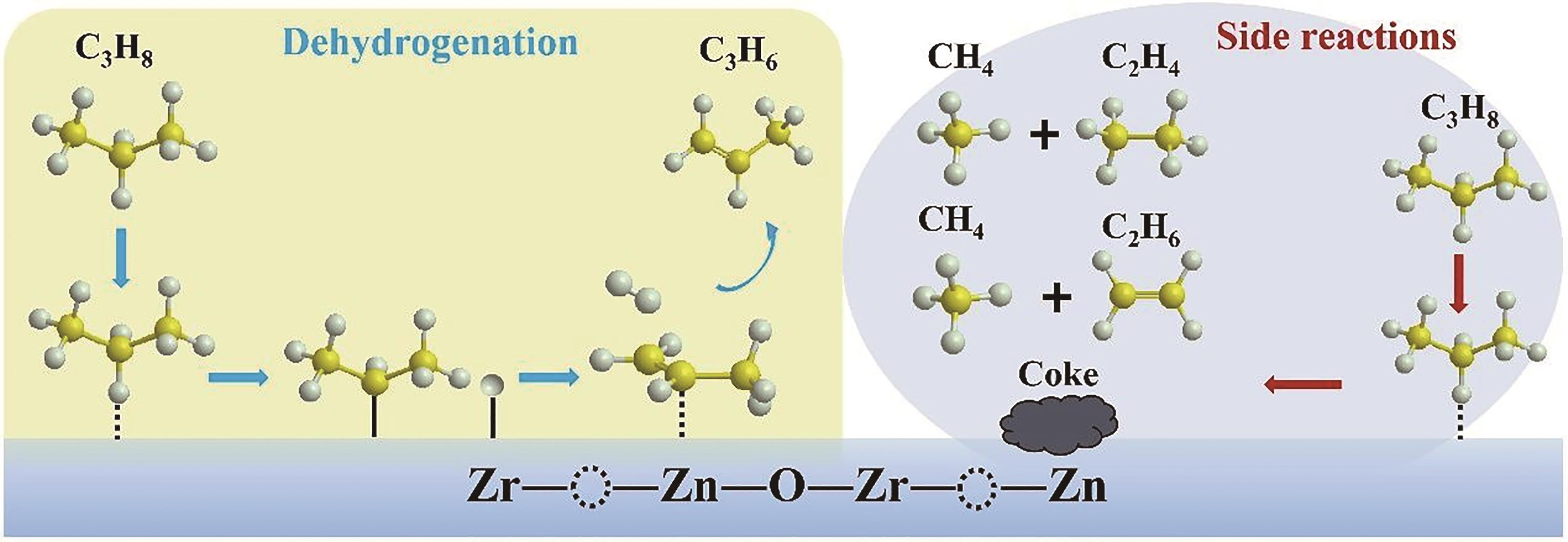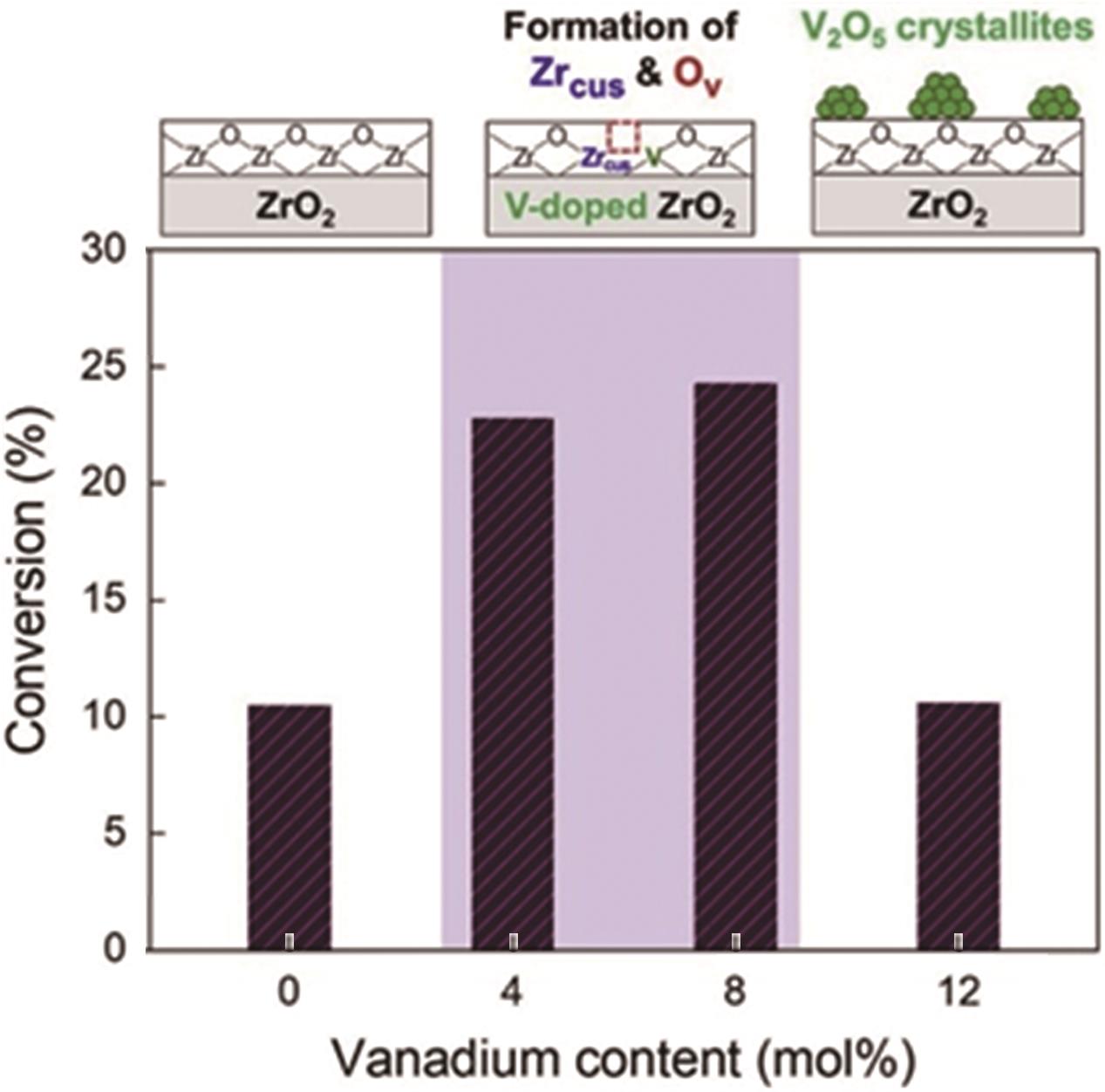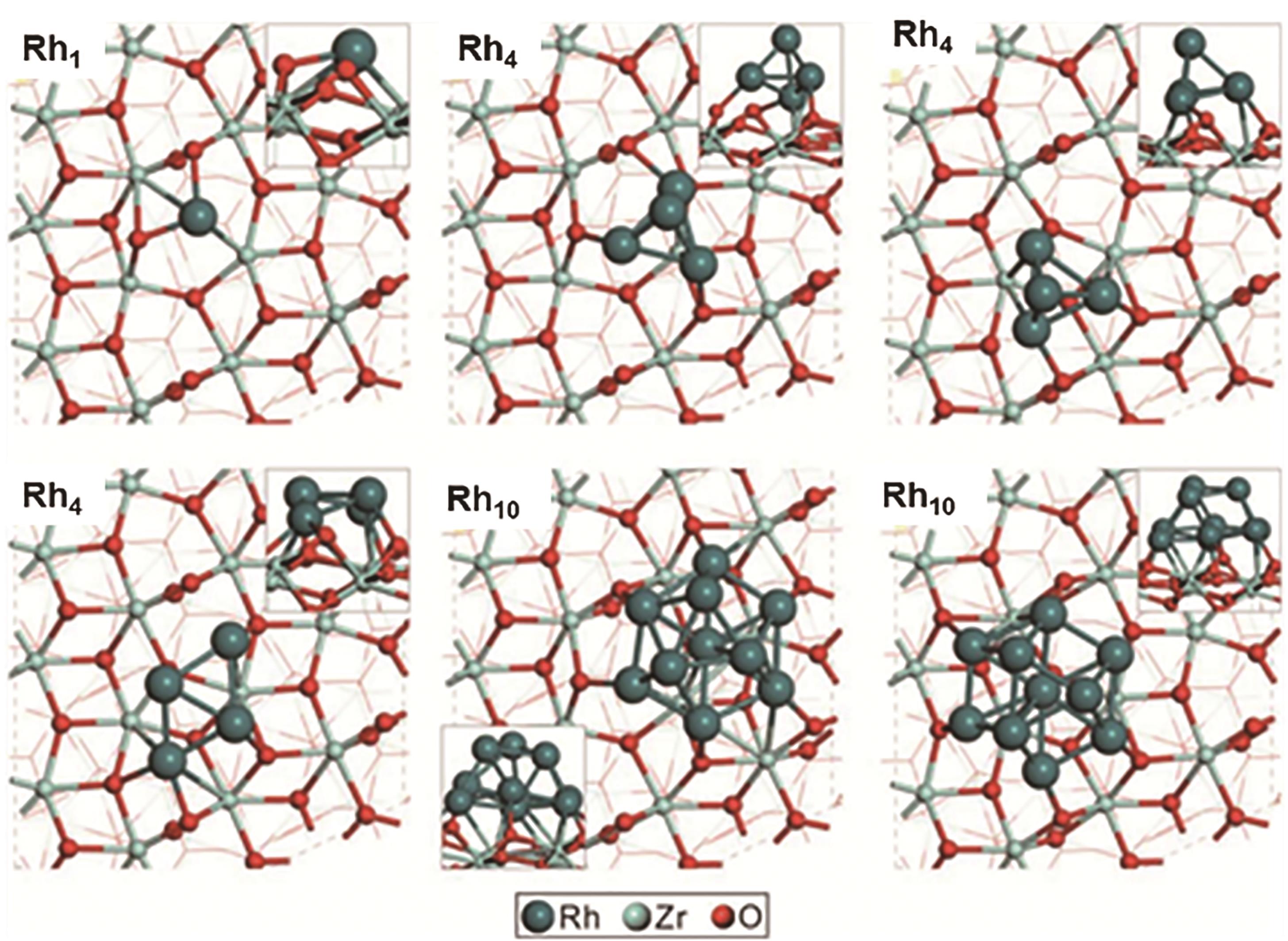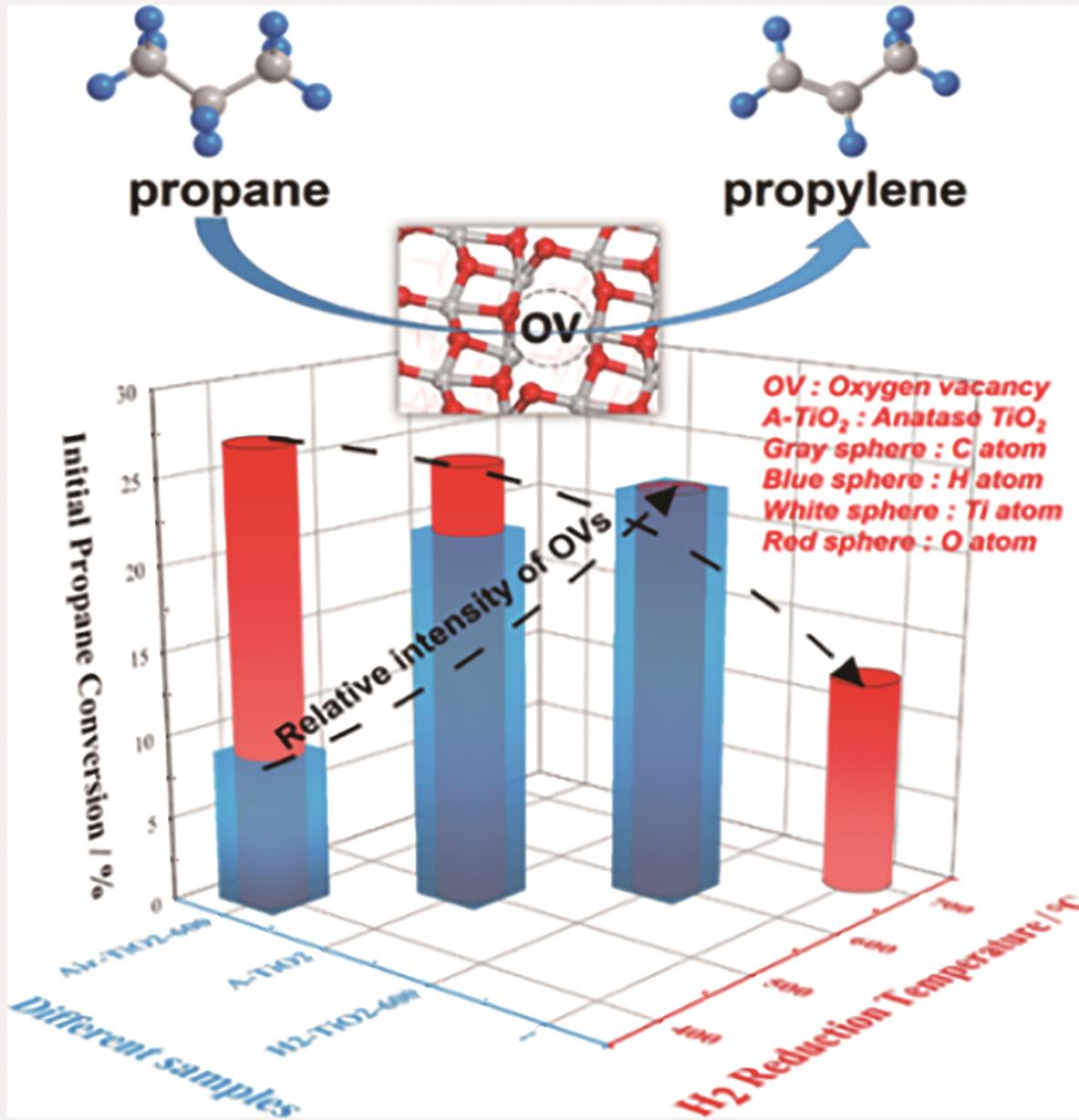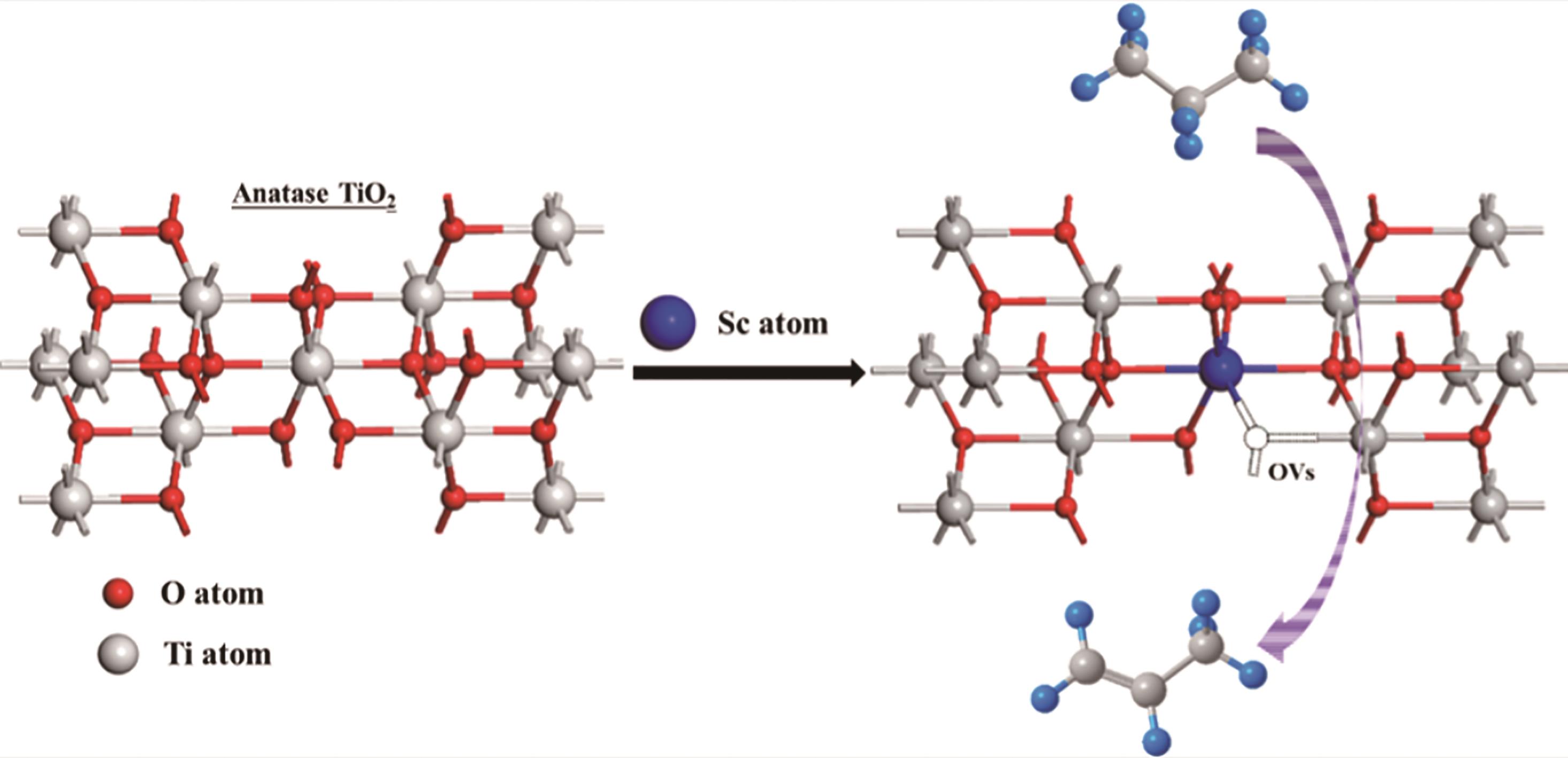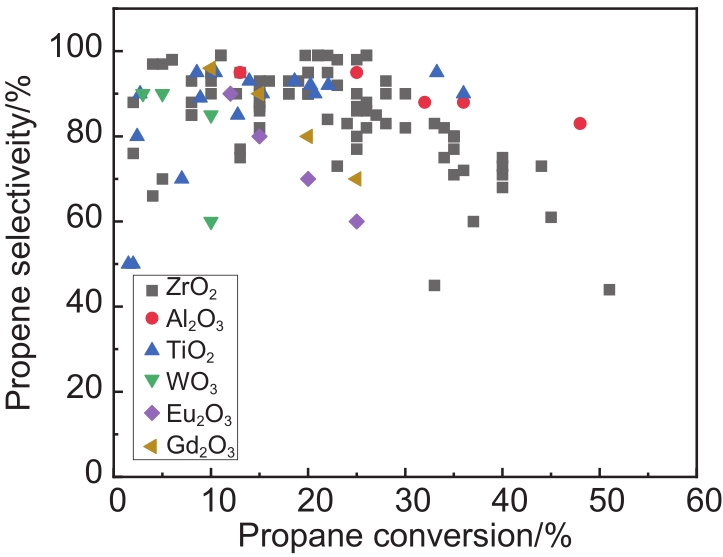
Chinese Journal of Applied Chemistry ›› 2023, Vol. 40 ›› Issue (6): 789-805.DOI: 10.19894/j.issn.1000-0518.220414
• Review • Previous Articles Next Articles
Research Progress of Bulk Metal Oxides for Non-oxidative Propane Dehydrogenation
Yi-Chen YU, Yu-Chen ZHANG, Yao-Yuan ZHANG( ), Qin WU, Da-Xin SHI, Kang-Cheng CHEN, Han-Sheng LI(
), Qin WU, Da-Xin SHI, Kang-Cheng CHEN, Han-Sheng LI( )
)
- School of Chemistry and Chemical Engineering,Beijing Institute of Technology,Beijing 100081,China
-
Received:2022-12-29Accepted:2023-05-22Published:2023-06-01Online:2023-06-27 -
Contact:Yao-Yuan ZHANG,Han-Sheng LI -
About author:hanshengli@bit.edu.cn
yaoyuan.zhang@bit.edu.cn;
-
Supported by:the National Natural Science Foundation of China(22108013);the Petro China Innovation Foundation(2020D-5007-0402);Beijing Institute of Technology Research Fund Program for Young Scholars
CLC Number:
Cite this article
Yi-Chen YU, Yu-Chen ZHANG, Yao-Yuan ZHANG, Qin WU, Da-Xin SHI, Kang-Cheng CHEN, Han-Sheng LI. Research Progress of Bulk Metal Oxides for Non-oxidative Propane Dehydrogenation[J]. Chinese Journal of Applied Chemistry, 2023, 40(6): 789-805.
share this article
Add to citation manager EndNote|Ris|BibTeX
URL: http://yyhx.ciac.jl.cn/EN/10.19894/j.issn.1000-0518.220414
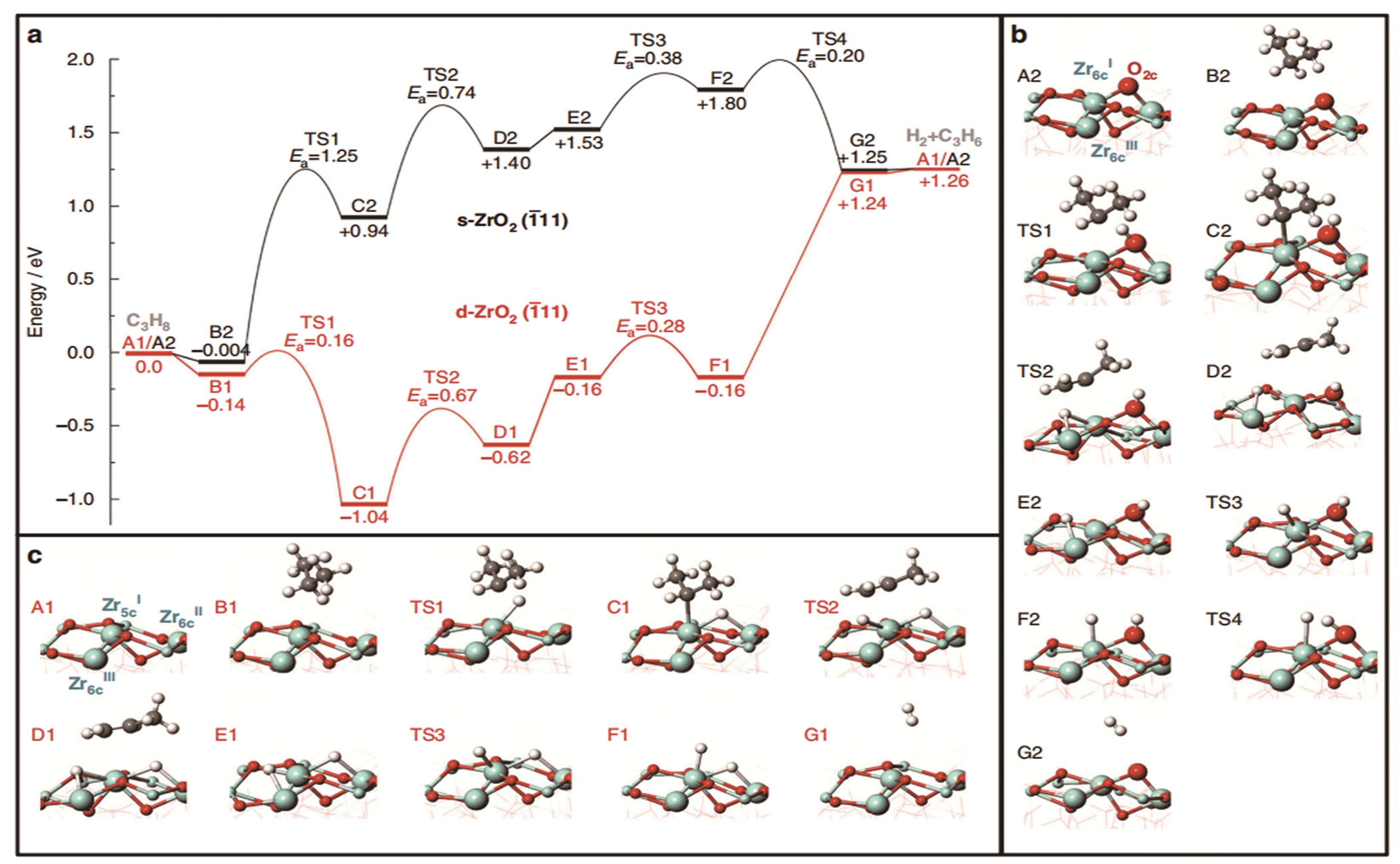
Fig.1 Mechanism of PDH on ZrO2(-111). (a) The calculated energy profiles along the pathways of PDH and the optimized structures of intermediates and transition states (TS) on (b) s-ZrO2(-111) and (c) d-ZrO2(-111) surfaces (cyan, grey, red and white symbols stand for Zr, C, O and H, respectively)[24]
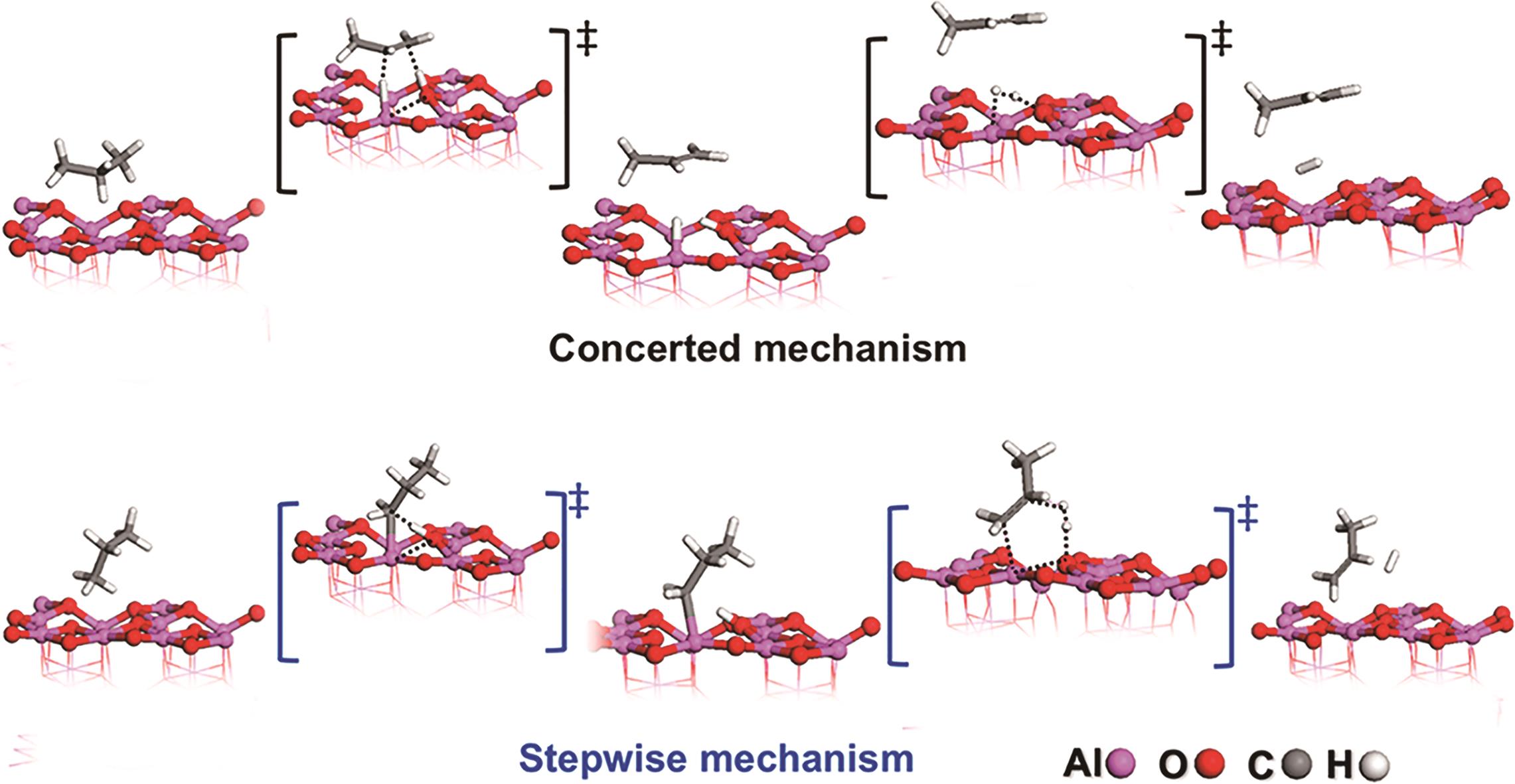
Fig.2 Propane dehydrogenation reaction mechanism of AlVa-OIIIa site on γ-Al2O3(100) surface. Transition states denoted with double daggers (?); top panel: concerted mechanism, bottom panel: stepwise mechanism[25]
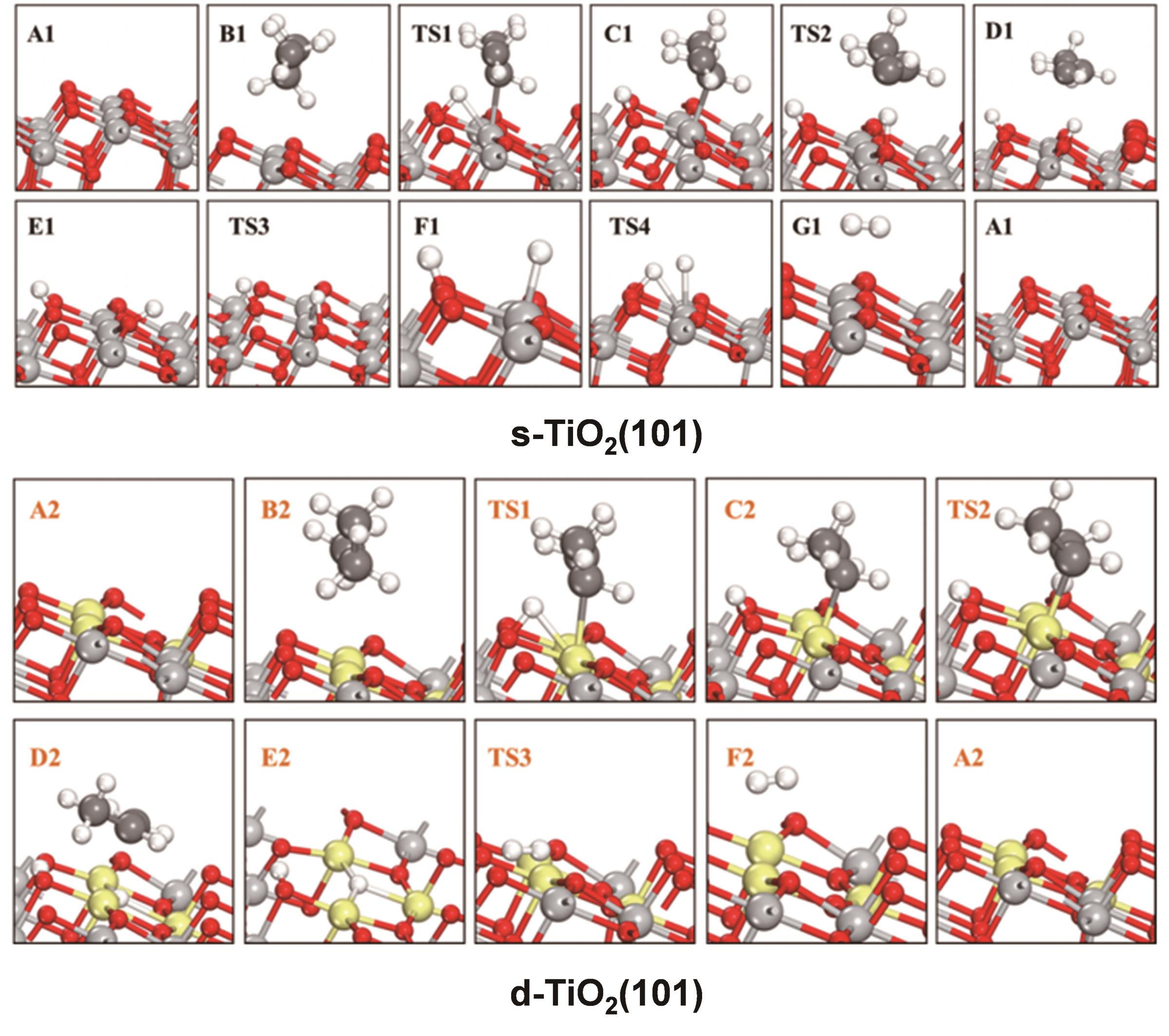
Fig.3 Mechanism of propane dehydrogenation on the surface of TiO2(101). Top panel: s-TiO2(101), bottom panel:d-TiO2(101) (light grey, yellow, dark grey, red and white symbols stand for Ti, Ticus, C, O and H, respectively)[27]
| Catalysts | Temperature/℃ | Feed composition(V∶V) | m(catalysts)/g | Propane conversion/% | Propene selectivity/% | Ref. |
|---|---|---|---|---|---|---|
| 0.05%Cu/LaZrO x | 550 | V(C3H8)∶V(N2)=2∶3 | 0.04 | 12.6 | 90 | [ |
| 0.05%Ru/LaZrO x | 550 | V(C3H8)∶V(N2)=2∶3 | 0.04 | 19.7 | 99 | [ |
| A-TiO2(anatase) | 600 | V(C3H8)∶V(Ar)=1∶10 | 0.3 | 22 | 92 | [ |
| Air-TiO2-600 | 600 | V(C3H8)∶V(Ar)=1∶10 | 0.3 | 10 | 70 | [ |
| H2-TiO2-600 | 600 | V(C3H8)∶V(Ar)=1∶10 | 0.3 | 24 | 92 | [ |
| ZrO2_A (mixed phases) | 550 | V(C3H8)∶V(N2)=2∶3 | 0.68~1.8 | 13 | 75 | [ |
| ZrO2_F (monoclinic) | 550 | V(C3H8)∶V(N2)=2∶3 | 0.68~1.8 | 8 | 85 | [ |
| ZrO2_300 (mixed phases) | 550 | V(C3H8):V(N2)=2∶3 | 0.68~1.8 | 8 | 93 | [ |
| γ-Al2O3(CO reduction) | 600 | V(C3H8)∶V(N2)=5∶95 | 0.05~0.4 | 25 | 95 | [ |
| δ-Al2O3(CO reduction) | 600 | V(C3H8)∶V(N2)=5∶95 | 0.05~0.4 | 13 | 95 | [ |
| 0.05%Cu/LaZrO x | 550 | V(C3H8)∶V(H2)∶V(N2)=4:1∶5 | - | 30 | 90 | [ |
| 0.05%Cu/LaZrO x | 550 | V(C3H8)∶V(H2)∶V(N2)=4∶3∶3 | - | 20 | 90 | [ |
| 0.005%Ru/YZrO x | 550 | V(C3H8)∶V(N2)=2∶3 | - | 20 | 90 | [ |
| 0.005%Ru/YZrO x | 550 | V(C3H8)∶V(H2)∶V(N2)=4∶1∶5 | - | 28 | 90 | [ |
| 1%V-TiO2 | 550 | V(C3H8)∶V(Ar)=1∶39 | 0.2 | 11 | 95 | [ |
| 0.05%Rh/LaZrO x | 550 | V(C3H8)∶V(N2)=2∶3 | 0.05~0.3 | 23 | 92 | [ |
| 0.05%Rh/YZrO x | 550 | V(C3H8)∶V(N2)=2∶3 | 0.05~0.3 | 28 | 93 | [ |
| 0.05%Ru/ZrO x | 550 | V(C3H8)∶V(N2)=2∶3 | 0.05~0.3 | 15 | 92 | [ |
| 0.05%Pt/ZrO x | 550 | V(C3H8)∶V(N2)=2∶3 | 0.05~0.3 | 16 | 93 | [ |
| 0.05%Ir/ZrO x | 550 | V(C3H8)∶V(N2)=2∶3 | 0.05~0.3 | 18 | 93 | [ |
| 0.005%Rh/ZrO x | 550 | V(C3H8)∶V(N2)=2∶3 | 0.05~0.3 | 18 | 90 | [ |
| 0.1%Rh/ZrO x | 550 | V(C3H8)∶V(N2)=2∶3 | 0.05~0.3 | 22 | 95 | [ |
| 0.01%Rh/LaZrO x | 550 | V(C3H8)∶V(N2)=2∶3 | 0.05~0.3 | 20 | 95 | [ |
| 0.01%Ru/LaZrO x | 550 | V(C3H8)∶V(N2)=2∶3 | 0.05~0.3 | 19 | 93 | [ |
| 0.03%Ir/LaZrO x | 550 | V(C3H8)∶V(N2)=2∶3 | 0.05~0.3 | 20 | 95 | [ |
| 0.025%Rh/ZrO2 | 550 | V(C3H8)∶V(N2)=2∶3 | 0.3 | 25 | 90 | [ |
| 0.05%Rh/ZrO2 | 550 | V(C3H8)∶V(N2)=2∶3 | 0.3 | 26 | 88 | [ |
| 0.01%Rh/ZrO2 | 550 | V(C3H8)∶V(N2)=2∶3 | 0.3 | 18 | 90 | [ |
| 0.1%Rh/ZrO2 | 550 | V(C3H8)∶V(N2)=2∶3 | 0.3 | 20 | 90 | [ |
| ZrO2 | 550 | V(C3H8)∶V(N2)=2∶3 | 0.3 | 15 | 88 | [ |
| Cr5Zr95O x | 550 | V(C3H8)∶V(N2)=2∶3 | 0.01~1.2 | 15 | 93 | [ |
| Cr10Zr90O x | 550 | V(C3H8)∶V(N2)=2∶3 | 0.01~1.2 | 5 | 97 | [ |
| Cr10Zr90/SiO2 | 550 | V(C3H8)∶V(N2)=2∶3 | 0.05 | 13 | 95 | [ |
| CuZrO-8 | 600 | V(C3H8)∶V(Ar)=4∶26 | 0.2 | 26 | 99 | [ |
| CuZrO-5 | 600 | V(C3H8)∶V(Ar)=4∶26 | 0.2 | 26 | 99 | [ |
| CuZrO-10 | 600 | V(C3H8)∶V(Ar)=4∶26 | 0.2 | 26 | 99 | [ |
| ZnZr2 | 500 | V(C3H8)∶V(N2)=5∶95 | 0.1 | 44 | 73 | [ |
| ZnZr3 | 500 | V(C3H8)∶V(N2)=5∶95 | 0.1 | 45 | 61 | [ |
| ZrO2 | 550 | V(C3H8)∶V(Ar)=4∶26 | 0.2 | 11 | 99 | [ |
| VZrO-4 | 550 | V(C3H8)∶V(Ar)=4∶26 | 0.2 | 23 | 98 | [ |
| VZrO-8 | 550 | V(C3H8)∶V(Ar)=4∶26 | 0.2 | 25 | 98 | [ |
| θ-Al2O3-90 | 630 | V(C3H8)∶V(H2)∶V(N2)=1∶1∶8 | 2 | 47.5 | 88 | [ |
| γ-Al2O3-200 | 630 | V(C3H8)∶V(H2)∶V(N2)=1∶1∶8 | 2 | 40 | 83 | [ |
| γ-Al2O3-100 | 630 | V(C3H8)∶V(H2)∶V(N2)=1∶1∶8 | 2 | 32 | 88 | [ |
| TiO2-600 | 600 | V(C3H8)∶V(Ar)=1.5∶12 | 0.3 | 15 | 93 | [ |
| 1.5%Sc/TiO2-500 | 600 | V(C3H8)∶V(Ar)=1.5∶12 | 0.3 | 40 | 90 | [ |
| TiO2-600 | 600 | V(C3H8)∶V(Ar)=1.5∶12 | 0.3 | 15 | 93 | [ |
| 1.5%Sc/TiO2-500 | 600 | V(C3H8)∶V(Ar)=1.5∶12 | 0.3 | 40 | 90 | [ |
| 1.5%Sc/TiO2-600 | 600 | V(C3H8)∶V(Ar)=1.5∶12 | 0.3 | 35 | 95 | [ |
| WO3 | 600 | V(C3H8)∶V(H2)=2 | 0.2 | 3 | 90 | [ |
| WO3 | 600 | V(C3H8)∶V(H2)=1 | 0.2 | 5 | 90 | [ |
| WO3 | 600 | V(C3H8)∶V(H2)=0.5 | 0.2 | 10 | 85 | [ |
| Eu2O3 | 550 | V(C3H8)∶V(N2)=2∶3 | 0.05 | 25 | 60 | [ |
| Gd2O3 | 550 | V(C3H8)∶V(N2)=2∶3 | 0.05 | 25 | 70 | [ |
Table 1 Catalytic performance of different bulk metal oxide catalysts in PDH reaction
| Catalysts | Temperature/℃ | Feed composition(V∶V) | m(catalysts)/g | Propane conversion/% | Propene selectivity/% | Ref. |
|---|---|---|---|---|---|---|
| 0.05%Cu/LaZrO x | 550 | V(C3H8)∶V(N2)=2∶3 | 0.04 | 12.6 | 90 | [ |
| 0.05%Ru/LaZrO x | 550 | V(C3H8)∶V(N2)=2∶3 | 0.04 | 19.7 | 99 | [ |
| A-TiO2(anatase) | 600 | V(C3H8)∶V(Ar)=1∶10 | 0.3 | 22 | 92 | [ |
| Air-TiO2-600 | 600 | V(C3H8)∶V(Ar)=1∶10 | 0.3 | 10 | 70 | [ |
| H2-TiO2-600 | 600 | V(C3H8)∶V(Ar)=1∶10 | 0.3 | 24 | 92 | [ |
| ZrO2_A (mixed phases) | 550 | V(C3H8)∶V(N2)=2∶3 | 0.68~1.8 | 13 | 75 | [ |
| ZrO2_F (monoclinic) | 550 | V(C3H8)∶V(N2)=2∶3 | 0.68~1.8 | 8 | 85 | [ |
| ZrO2_300 (mixed phases) | 550 | V(C3H8):V(N2)=2∶3 | 0.68~1.8 | 8 | 93 | [ |
| γ-Al2O3(CO reduction) | 600 | V(C3H8)∶V(N2)=5∶95 | 0.05~0.4 | 25 | 95 | [ |
| δ-Al2O3(CO reduction) | 600 | V(C3H8)∶V(N2)=5∶95 | 0.05~0.4 | 13 | 95 | [ |
| 0.05%Cu/LaZrO x | 550 | V(C3H8)∶V(H2)∶V(N2)=4:1∶5 | - | 30 | 90 | [ |
| 0.05%Cu/LaZrO x | 550 | V(C3H8)∶V(H2)∶V(N2)=4∶3∶3 | - | 20 | 90 | [ |
| 0.005%Ru/YZrO x | 550 | V(C3H8)∶V(N2)=2∶3 | - | 20 | 90 | [ |
| 0.005%Ru/YZrO x | 550 | V(C3H8)∶V(H2)∶V(N2)=4∶1∶5 | - | 28 | 90 | [ |
| 1%V-TiO2 | 550 | V(C3H8)∶V(Ar)=1∶39 | 0.2 | 11 | 95 | [ |
| 0.05%Rh/LaZrO x | 550 | V(C3H8)∶V(N2)=2∶3 | 0.05~0.3 | 23 | 92 | [ |
| 0.05%Rh/YZrO x | 550 | V(C3H8)∶V(N2)=2∶3 | 0.05~0.3 | 28 | 93 | [ |
| 0.05%Ru/ZrO x | 550 | V(C3H8)∶V(N2)=2∶3 | 0.05~0.3 | 15 | 92 | [ |
| 0.05%Pt/ZrO x | 550 | V(C3H8)∶V(N2)=2∶3 | 0.05~0.3 | 16 | 93 | [ |
| 0.05%Ir/ZrO x | 550 | V(C3H8)∶V(N2)=2∶3 | 0.05~0.3 | 18 | 93 | [ |
| 0.005%Rh/ZrO x | 550 | V(C3H8)∶V(N2)=2∶3 | 0.05~0.3 | 18 | 90 | [ |
| 0.1%Rh/ZrO x | 550 | V(C3H8)∶V(N2)=2∶3 | 0.05~0.3 | 22 | 95 | [ |
| 0.01%Rh/LaZrO x | 550 | V(C3H8)∶V(N2)=2∶3 | 0.05~0.3 | 20 | 95 | [ |
| 0.01%Ru/LaZrO x | 550 | V(C3H8)∶V(N2)=2∶3 | 0.05~0.3 | 19 | 93 | [ |
| 0.03%Ir/LaZrO x | 550 | V(C3H8)∶V(N2)=2∶3 | 0.05~0.3 | 20 | 95 | [ |
| 0.025%Rh/ZrO2 | 550 | V(C3H8)∶V(N2)=2∶3 | 0.3 | 25 | 90 | [ |
| 0.05%Rh/ZrO2 | 550 | V(C3H8)∶V(N2)=2∶3 | 0.3 | 26 | 88 | [ |
| 0.01%Rh/ZrO2 | 550 | V(C3H8)∶V(N2)=2∶3 | 0.3 | 18 | 90 | [ |
| 0.1%Rh/ZrO2 | 550 | V(C3H8)∶V(N2)=2∶3 | 0.3 | 20 | 90 | [ |
| ZrO2 | 550 | V(C3H8)∶V(N2)=2∶3 | 0.3 | 15 | 88 | [ |
| Cr5Zr95O x | 550 | V(C3H8)∶V(N2)=2∶3 | 0.01~1.2 | 15 | 93 | [ |
| Cr10Zr90O x | 550 | V(C3H8)∶V(N2)=2∶3 | 0.01~1.2 | 5 | 97 | [ |
| Cr10Zr90/SiO2 | 550 | V(C3H8)∶V(N2)=2∶3 | 0.05 | 13 | 95 | [ |
| CuZrO-8 | 600 | V(C3H8)∶V(Ar)=4∶26 | 0.2 | 26 | 99 | [ |
| CuZrO-5 | 600 | V(C3H8)∶V(Ar)=4∶26 | 0.2 | 26 | 99 | [ |
| CuZrO-10 | 600 | V(C3H8)∶V(Ar)=4∶26 | 0.2 | 26 | 99 | [ |
| ZnZr2 | 500 | V(C3H8)∶V(N2)=5∶95 | 0.1 | 44 | 73 | [ |
| ZnZr3 | 500 | V(C3H8)∶V(N2)=5∶95 | 0.1 | 45 | 61 | [ |
| ZrO2 | 550 | V(C3H8)∶V(Ar)=4∶26 | 0.2 | 11 | 99 | [ |
| VZrO-4 | 550 | V(C3H8)∶V(Ar)=4∶26 | 0.2 | 23 | 98 | [ |
| VZrO-8 | 550 | V(C3H8)∶V(Ar)=4∶26 | 0.2 | 25 | 98 | [ |
| θ-Al2O3-90 | 630 | V(C3H8)∶V(H2)∶V(N2)=1∶1∶8 | 2 | 47.5 | 88 | [ |
| γ-Al2O3-200 | 630 | V(C3H8)∶V(H2)∶V(N2)=1∶1∶8 | 2 | 40 | 83 | [ |
| γ-Al2O3-100 | 630 | V(C3H8)∶V(H2)∶V(N2)=1∶1∶8 | 2 | 32 | 88 | [ |
| TiO2-600 | 600 | V(C3H8)∶V(Ar)=1.5∶12 | 0.3 | 15 | 93 | [ |
| 1.5%Sc/TiO2-500 | 600 | V(C3H8)∶V(Ar)=1.5∶12 | 0.3 | 40 | 90 | [ |
| TiO2-600 | 600 | V(C3H8)∶V(Ar)=1.5∶12 | 0.3 | 15 | 93 | [ |
| 1.5%Sc/TiO2-500 | 600 | V(C3H8)∶V(Ar)=1.5∶12 | 0.3 | 40 | 90 | [ |
| 1.5%Sc/TiO2-600 | 600 | V(C3H8)∶V(Ar)=1.5∶12 | 0.3 | 35 | 95 | [ |
| WO3 | 600 | V(C3H8)∶V(H2)=2 | 0.2 | 3 | 90 | [ |
| WO3 | 600 | V(C3H8)∶V(H2)=1 | 0.2 | 5 | 90 | [ |
| WO3 | 600 | V(C3H8)∶V(H2)=0.5 | 0.2 | 10 | 85 | [ |
| Eu2O3 | 550 | V(C3H8)∶V(N2)=2∶3 | 0.05 | 25 | 60 | [ |
| Gd2O3 | 550 | V(C3H8)∶V(N2)=2∶3 | 0.05 | 25 | 70 | [ |
| 1 | 杜凯敏, 范杰. 丙烷氧化脱氢制丙烯研究进展[J]. 化工进展, 2019, 38(6): 2697-2705. |
| DU K M, FAN J. Research progress on oxidative dehydrogenation of propane to propene[J]. Chem Ind Eng Prog, 2019, 38(6): 2697-2705. | |
| 2 | 韩香莲. 丙烯生产工艺研究进展[J]. 山东化工, 2013, 42(5): 60-62. |
| HAN X L. Development of propylene production technology[J]. Shandong Chem Ind, 2013, 42(5): 60-62. | |
| 3 | 彭英桂, 范鑫鑫, 李虎强, 等. 蒸汽裂解原料研究进展[J]. 广州化工, 2016, 44(16): 41-43. |
| PENG Y G, FAN X X, LI H Q, et al. Development of feedstock for steam cracking[J]. Guangzhou Chem Ind, 2016, 44(16): 41-43. | |
| 4 | 冯媛, 李虎强, 陈文瑞, 等. 蒸汽裂解催化剂研究进展[J]. 广州化工, 2016, 44(13): 45-48. |
| FENG Y, LI H Q, CHEN W R, et al. Research progress on catalysts of steam cracking[J]. Guangzhou Chem Ind, 2016, 44(13): 45-48. | |
| 5 | 毛安国, 白风宇, 刘守军, 等. 催化裂化过程烃类分子水平转化规律分析[J]. 石油炼制与化工, 2022, 53(5): 40-45. |
| MAO A G, BAI F Y, LIU S J, et al. Molecular-based hydrocarbon conversion rules in FCC progress[J]. Pet Process Petrochem, 2022, 53(5): 40-45. | |
| 6 | 陈浩, 詹小燕, 郭振宇. 丙烷脱氢工艺发展趋势分析[J]. 炼油技术与工程, 2020, 50(11): 9-12. |
| CHEN H, ZHAN X Y, GUO Z Y. Analysis on development trend of propane dehydrogenation process[J]. Pet Refin Eng, 2020, 50(11): 9-12. | |
| 7 | 夏兵. 丙烷脱氢(PDH)工艺技术及经济性分析[J]. 山东化工, 2021, 50(14): 165-167. |
| XIA B. Technology and economic analysis of propane dehydrogenation(PDH)[J]. Shandong Chem Ind, 2021, 50(14): 165-167. | |
| 8 | SATTLER J J H B, RUIZ-MARTINEZ J, SANTILLAN-JIMENEZ E, et al. Catalytic dehydrogenation of light alkanes on metals and metal oxides[J]. Chem Rev, 2014, 114(20): 10613-10653. |
| 9 | 余长林, 葛庆杰, 徐恒泳, 等. 丙烷脱氢制丙烯研究新进展[J]. 化工进展, 2006, 25(9): 977-982. |
| YU C L, GE Q J, XU H Y, et al. New development of dehydrogenation of propane to propylene[J]. Chem Ind Eng Prog, 2006, 25(9): 977-982. | |
| 10 | 张雨宸, 张耀远, 吴芹, 等. 丙烷脱氢用高稳定性Pt基催化剂研究进展[J]. 化工进展, 2022, 41(9): 4733-4751. |
| ZHANG Y C, ZHANG Y Y, WU Q, et al. Advances in high stable Pt based catalysts for propane dehydrogenation[J]. Chem Ind Eng Prog, 2022, 41(9): 4733-4751. | |
| 11 | YANG C, WU Z W, ZHANG G H, et al. Promotion of Pd nanoparticles by Fe and formation of a Pd3Fe intermetallic alloy for propane dehydrogenation[J]. Catal Today, 2019, 323: 123-128. |
| 12 | GALLAGHER J R, CHILDERS D J, ZHAO H, et al. Structural evolution of an intermetallic Pd-Zn catalyst selective for propane dehydrogenation[J]. Phys Chem Chem Phys, 2015, 17(42): 28144-28153. |
| 13 | CHILDERS D J, SCHWEITZER N M, SHAHARI S M K, et al. Modifying structure-sensitive reactions by addition of Zn to Pd[J]. J Catal, 2014, 318: 75-84. |
| 14 | WU Z, WEGENER E C, TSENG H T, et al. Pd-In intermetallic alloy nanoparticles: highly selective ethane dehydrogenation catalysts[J]. Catal Sci Technol, 2016, 6(18): 6965-6976. |
| 15 | SAELEE T, NAMUANGRUK S, KUNGWAN N, et al. Theoretical insight into catalytic propane dehydrogenation on Ni(111)[J]. J Phys Chem C, 2018, 122(26): 14678-14690. |
| 16 | HE Y, SONG Y, CULLEN D A, et al. Selective and stable non-noble-metal intermetallic compound catalyst for the direct dehydrogenation of propane to propylene[J]. J Am Chem Soc, 2018, 140(43): 14010-14014. |
| 17 | CHANG Q Y, WANG K Q, SUI Z J, et al. Rational design of single-atom-doped Ga2O3 catalysts for propane dehydrogenation: breaking through volcano plot by Lewis acid-base interactions[J]. ACS Catal, 2021, 11(9): 5135-5147. |
| 18 | ZHENG B, HUA W M, YUE Y H, et al. Dehydrogenation of propane to propene over different polymorphs of gallium oxide[J]. J Catal, 2005, 232(1): 143-151. |
| 19 | ZHANG J, ZHOU R J, CHANG Q Y, et al. Tailoring catalytic properties of V2O3 to propane dehydrogenation through single-atom doping: a DFT study[J]. Catal Today, 2021, 368: 46-57. |
| 20 | LIU G, ZHAO Z J, WU T, et al. Nature of the active sites of VOx/Al2O3 catalysts for propane dehydrogenation[J]. ACS Catal, 2016, 6(8): 5207-5214. |
| 21 | ZHAO Z J, WU T F, XIONG C Y, et al. Hydroxyl-mediated non-oxidative propane dehydrogenation over VOx/gamma-Al2O3 catalysts with improved stability[J]. Angew Chem Int Ed, 2018, 57(23): 6791-6795. |
| 22 | CHEN S, CHANG X, SUN G D, et al. Propane dehydrogenation: catalyst development, new chemistry, and emerging technologies[J]. Chem Soc Rev, 2021, 50(5): 3315-3354. |
| 23 | OTROSHCHENKO T, SOKOLOV S, STOYANOVA M, et al. ZrO2-based alternatives to conventional propane dehydrogenation catalysts: active sites, design, and performance[J]. Angew Chem Int Ed, 2015, 54(52): 15880-15883. |
| 24 | ZHANG Y Y, ZHAO Y, OTROSHCHENKO T, et al. Control of coordinatively unsaturated Zr sites in ZrO2 for efficient C—H bond activation[J]. Nat Commun, 2018, 9(1): 3794. |
| 25 | DIXIT M, KOSTETSKYY P, MPOURMPAKIS G. Structure-activity relationships in alkane dehydrogenation on γ-Al2O3: site-dependent reactions[J]. ACS Catal, 2018, 8(12): 11570-11578. |
| 26 | LI C F, GUO X J, SHANG Q H, et al. Defective TiO2 for propane dehydrogenation[J]. Ind Eng Chem Res, 2020, 59(10): 4377-4387. |
| 27 | XIE Z, YU T T, SONG W Y, et al. Highly active nanosized anatase TiO2– x oxide catalysts in situ formed through reduction and Ostwald ripening processes for propane dehydrogenation[J]. ACS Catal, 2020, 10(24): 14678-14693. |
| 28 | ZHANG Y Y, ZHAO Y, OTROSHCHENKO T, et al. The effect of phase composition and crystallite size on activity and selectivity of ZrO2 in non-oxidative propane dehydrogenation[J]. J Catal, 2019, 371: 313-324. |
| 29 | OTROSHCHENKO T, BULAVCHENKO O, THANH H V, et al. Controlling activity and selectivity of bare ZrO2 in non-oxidative propane dehydrogenation[J]. Appl Catal A, 2019, 585: 117189. |
| 30 | ZHANG H L, JIANG Y X, WANG G W, et al. In-depth study on propane dehydrogenation over Al2O3-based unconventional catalysts with different crystal phases[J]. Mol Catal, 2022, 519: 112143. |
| 31 | OTROSHCHENKO T, KONDRATENKO E V. Effect of hydrogen and supported metal on selectivity and on-stream stability of ZrO2-based catalysts in non-oxidative propane dehydrogenation[J]. Catal Commun, 2020, 144: 106068. |
| 32 | SHARMA L, JIANG X, WU Z, et al. Elucidating the origin of selective dehydrogenation of propane on γ-alumina under H2S treatment and co-feed[J]. J Catal, 2021, 394: 142-156. |
| 33 | OTROSHCHENKO T, KONDRATENKO V A, RODEMERCK U, et al. ZrO2-based unconventional catalysts for non-oxidative propane dehydrogenation: factors determining catalytic activity[J]. J Catal, 2017, 348: 282-290. |
| 34 | XIAO L Q, XIE Z A, SONG S J, et al. Descriptor-guided design and experimental synthesis of metal-doped TiO2 for propane dehydrogenation[J]. Ind Eng Chem Res, 2021, 60(3): 1200-1209. |
| 35 | PERECHODJUK A, ZHANG Y Y, KONDRATENKO V A, et al. The effect of supported Rh, Ru, Pt or Ir nanoparticles on activity and selectivity of ZrO2-based catalysts in non-oxidative dehydrogenation of propane[J]. Appl Catal A, 2020, 602: 117731. |
| 36 | ZHANG Y Y, ZHAO Y, OTROSHCHENKO T, et al. Structure-activity-selectivity relationships in propane dehydrogenation over Rh/ZrO2 catalysts[J]. ACS Catal, 2020, 10(11): 6377-6388. |
| 37 | OTROSHCHENKO T, RODEMERCK U, LINKE D, et al. Synergy effect between Zr and Cr active sites in binary CrZrOx or supported CrOx/LaZrOx: consequences for catalyst activity, selectivity and durability in non-oxidative propane dehydrogenation[J]. J Catal, 2017, 356: 197-205. |
| 38 | HAN S L, ZHAO Y, OTROSHCHENKO T, et al. Unraveling the origins of the synergy effect between ZrO2 and CrOx in supported CrZrOx for propene formation in nonoxidative propane dehydrogenation[J]. ACS Catal, 2019, 10(2): 1575-1590. |
| 39 | JEON N, CHOE H, JEONG B, et al. Cu-promoted zirconia catalysts for non-oxidative propane dehydrogenation[J]. Appl Catal A, 2019, 586: 117211. |
| 40 | QU Y M, LI G G, ZHAO T, et al. Low-temperature direct dehydrogenation of propane over binary oxide catalysts: insights into geometric effects and active sites[J]. ACS Sustainable Chem Eng, 2021, 9(38): 12755-12765. |
| 41 | JEON N, CHOE H, JEONG B, et al. Propane dehydrogenation over vanadium-doped zirconium oxide catalysts[J]. Catal Today, 2020, 352: 337-344. |
| 42 | WANG P Z, XU Z K, WANG T H, et al. Unmodified bulk alumina as an efficient catalyst for propane dehydrogenation[J]. Catal Sci Technol, 2020, 10(11): 3537-3541. |
| 43 | SHANG Q H, LIU J H, LANG W Z, et al. Improved catalytic activity and chemical stability of defective TiO2 catalysts by doping rare earth metal Sc for propane dehydrogenation[J]. Ind Eng Chem Res, 2021, 60(35): 12811-12820. |
| 44 | YUN Y J, ARAUJO J R, MELAET G, et al. Activation of tungsten oxide for propane dehydrogenation and its high catalytic activity and selectivity[J]. Catal Lett, 2017, 147(3): 622-632. |
| 45 | PERECHODJUK A, KONDRATENKO V A, LUND H, et al. Oxide of lanthanoids can catalyse non-oxidative propane dehydrogenation: mechanistic concept and application potential of Eu2O3- or Gd2O3-based catalysts[J]. Chem Comm, 2020, 56(85): 13021-13024. |
| 46 | PAN Y. Influence of oxygen vacancies on the electronic and optical properties of zirconium dioxide from first-principles calculations[J]. J Electron Mater, 2019, 48(8): 5154-5160. |
| 47 | PAN Y, ZHANG J. Influence of noble metals on the electronic and optical properties of the monoclinic ZrO2: a first-principles study[J]. Vacuum, 2021, 187: 110112. |
| 48 | HUSSEIN Z A, ABBAS S K, AHMED L M. UV-A activated ZrO2 via photodecolorization of methyl green dye[J]. IOP Conf Ser : Mater Sci Eng, 2018, 454: 012132. |
| 49 | 杨淑梅, 邓淑华, 黄慧民, 等. 二氧化锆负载催化剂的应用[J]. 工业催化, 2003, 11(10): 39-42. |
| YANG S M, DENG S H, HUANG H M, et al. Application of zirconia-supported catalysts[J]. Ind Catal, 2003, 11(10): 39-42. | |
| 50 | 王国营, 邵忠财, 高景龙, 等. 纳米二氧化锆在催化领域中的应用[J]. 化工中间体, 2007, 11: 24-28. |
| WANG G Y, SHAO Z C, GAO J L, et al. Nano zirconia and its application in catalytic field[J]. Chem Intermed, 2007, 11: 24-28. | |
| 51 | 杨成, 张成华, 许建, 等. 氧化锆催化合成气直接转化制芳烃[J]. 燃料化学学报, 2016, 44(7): 837-844. |
| YANG C, ZHANG C H, XU J, et al. One-step catalytic conversion of syngas to aromatics over ZrO2 catalyst[J]. J Fuel Chem Technol, 2016, 44(7): 837-844. | |
| 52 | LI K Z, CHEN J G. CO2 hydrogenation to methanol over ZrO2-containing catalysts: insights into ZrO2 induced synergy[J]. ACS Catal, 2019, 9(9): 7840-7861. |
| 53 | FATIMAH I, YANTI I, SUHARTO T E, et al. ZrO2-based catalysts for biodiesel production: a review[J]. Inorg Chem Commun, 2022, 143: 109808. |
| 54 | 刘华平, 叶素芳, 王呈呈, 等. ZrO2负载金属对CO2甲烷化的催化作用[J]. 低温与特气, 2016, 34(2): 1-6. |
| LIU H P, YE S F, WANG C C, et al. Catalytic performance of zirconia supported metal catalysts on CO2 methanation-a review[J]. Low Temp Spec Gases, 2016, 34(2): 1-6. | |
| 55 | OTROSHCHENKO T, KONDRATENKO V A, RODEMERCK U, et al. Non-oxidative dehydrogenation of propane, n-butane, and isobutane over bulk ZrO2-based catalysts: effect of dopant on the active site and pathways of product formation[J]. Catal Sci Technol, 2017, 7(19): 4499-4510. |
| 56 | LIU Y, XIA C J, WANG Q, et al. Direct dehydrogenation of isobutane to isobutene over Zn-doped ZrO2 metal oxide heterogeneous catalysts[J]. Catal Sci Technol, 2018, 8(19): 4916-4494. |
| 57 | PERECHODJUK A, KONDRATENKO E V. Nonoxidative dehydrogenation of isobutane over MZrOx (M=La or Y) with supported Ir, Pt, Rh, or Ru: effects of promoters and supported metals[J]. Ind Eng Chem Res, 2020, 59(50): 21729-21735. |
| 58 | 王方平, 刘辉, 郭笑荣, 等. 氧化铝载体工业焙烧条件对孔性质的影响[J]. 石油炼制与化工, 2021, 52(2): 46-50. |
| WANG F P, LIU H, GUO X R, et al. Effect of industrial calcination conditions on pore properties of alumina carriers[J]. Pet Process Petrochem, 2021, 52(2): 46-50. | |
| 59 | 季洪海, 隋宝宽, 凌凤香, 等. 棒状γ-氧化铝的合成及其负载NiMo催化剂的加氢脱金属性能[J]. 石油炼制与化工, 2020, 51(9): 79-85. |
| JI H H, SUI B K, LING F X, et al. Synthesis of rod-like γ-alumina and hydrodemetallization property of NiMo/γ-alumina catalyst[J]. Pet Process Petrochem, 2020, 51(9): 79-85. | |
| 60 | KWAK J H, HU J Z, MEI D H, et al. Coordinatively unsaturated Al3+ centers as binding sites for active catalyst phases of platinum on γ-Al2O3[J]. Science, 2009, 325: 1670-1674. |
| 61 | TANG N F, CONG Y, SHANG Q H, et al. Coordinatively unsaturated Al3+ sites anchored subnanometric ruthenium catalyst for hydrogenation of aromatics[J]. ACS Catal, 2017, 7(9): 5987-5991. |
| 62 | KOSTETSKYY P, MPOURMPAKIS G. Structure-activity relationships in the production of olefins from alcohols and ethers: a first-principles theoretical study[J]. Catal Sci Technol, 2015, 5(9): 4547-4555. |
| 63 | KOSTESTKYY P, YU J, GORTE R J, et al. Structure-activity relationships on metal-oxides: alcohol dehydration[J]. Catal Sci Technol, 2014, 4(11): 3861-3869. |
| 64 | FANG Z T, WANG Y, DIXON D A. Computational study of ethanol conversion on Al8O12 as a model for γ-Al2O3[J]. J Phys Chem C, 2015, 119(41): 23413-23421. |
| 65 | RODEMERCK U, KONDRATENKO E V, OTROSHCHENKO T, et al. Unexpectedly high activity of bare alumina for non-oxidative isobutane dehydrogenation[J]. Chem Comm, 2016, 52(82): 12222-12225. |
| 66 | ZHAO D, LUND H, RODEMERCK U, et al. Revealing fundamentals affecting activity and product selectivity in non-oxidative propane dehydrogenation over bare Al2O3[J]. Catal Sci Technol, 2021, 11(4): 1386-1394. |
| 67 | ABDELGAID M, DEAN J, MPOURMPAKIS G. Improving alkane dehydrogenation activity on γ-Al2O3 through Ga doping[J]. Catal Sci Technol, 2020, 10(21): 7194-7202. |
| 68 | XIE Z A, LI Z, TANG P, et al. The effect of oxygen vacancies on the coordinatively unsaturated Al-O acid-base pairs for propane dehydrogenation[J]. J Catal, 2021, 397: 172-182. |
| 69 | ZHANG W, TIAN Y, HE H L, et al. Recent advances in the synthesis of hierarchically mesoporous TiO2 materials for energy and environmental applications[J]. Natl Sci Rev, 2020, 7(11): 1702-1725. |
| 70 | 周黎明, 岳海荣, 刘长军, 等. Pd/TiO2-ZnO异质结用于光催化CO2氧化乙烷脱氢制乙烯[J]. 应用化工, 2022, 51(3): 622-628. |
| ZHOU L M, YUE H R, LIU C J, et al. Photocatalytic oxidative dehydrogenation of ethane to ethylene with CO2 over Pd/TiO2-ZnO heterojunction[J]. Appl Chem Ind, 2022, 51(3): 622-628. | |
| 71 | 帅树乙, 李婧, 张连辉, 等. 溶胶-凝胶法制备纳米二氧化钛及其光催化性能[J]. 化学世界, 2022, 63(4): 216-221. |
| SHUAI S Y, LI J, ZHANG L H, et al. Preparation and photocatalytic performance of nano-sized titanium dioxide by sol-gel method[J]. Chem World, 2022, 63(4): 216-221. | |
| 72 | 黄锐, 菅泽, 韩生. 二氧化钛在储能中的设计和应用[J]. 应用技术学报, 2022, 22(3): 235-240. |
| HUANG R, JIAN Z, HAN S. The design and application of titanium dioxide in energy storage[J]. J Technol, 2022, 22(3): 235-240. | |
| 73 | 刘庆祎, 肖桐, 孙文杰. 纳米二氧化钛强化的相变储能研究进展[J]. 化工学报, 2022, 73(5): 1863-1882. |
| LIU Q Y, XIAO T, SUN W J. Progress in the research of phase change energy storage enhanced by titanium dioxide nanoparticles[J]. J Chem Eng, 2022, 73(5): 1863-1882. | |
| 74 | JIANG F, ZENG L, LI S R, et al. Propane dehydrogenation over Pt/TiO2-Al2O3 catalysts[J]. ACS Catal, 2014, 5(1): 438-447. |
| 75 | SONG W Y, YU K C, JI X Y, et al. Computational screening and experimental synthesis of doped TiO2 for propane dehydrogenation [J]. Energy Fuels, 2021, 35(23): 19624-19633. |
| [1] | Yi-Cheng ZHANG, Fei ZHA, Xiao-Hua TANG, Yue CHANG, Hai-Feng TIAN, Xiao-Jun GUO. Research Progress of Heterogeneous Catalytic Preparation of Organic Peroxides [J]. Chinese Journal of Applied Chemistry, 2023, 40(6): 769-788. |
| [2] | Wen-Jun SHI, Zhong-Hui SUN, Zhong-Qian SONG, XU-Jia NAN, Dong-Xue HAN, Li NIU. Research Progress of Layered Transition Metal Oxides Cathode Materials for Sodium-ion Batteries [J]. Chinese Journal of Applied Chemistry, 2023, 40(4): 583-596. |
| [3] | Bing LI, Jun-Hui LIU, Ya-Kun SONG, Xiang LI, Xu-Ming GUO, Jian XIONG. Recent Advances in Application of Metal-Organic Frameworks for Hydrogen Generation by Catalytic Hydrolysis of Ammonia Borane [J]. Chinese Journal of Applied Chemistry, 2023, 40(3): 329-340. |
| [4] | Lu-Fei WANG, Meng-Meng ZHEN, Bo-Xiong SHEN. Research Progress of Controlling Lithium-Sulfur Batteries by Electrocatalysts under Lean Electrolyte Conditions [J]. Chinese Journal of Applied Chemistry, 2023, 40(2): 188-209. |
| [5] | Rong CAO, Jie-Zhen XIA, Man-Hua LIAO, Lu-Chao ZHAO, Chen ZHAO, Qi WU. Theoretical Research Progress of Single Atom Catalysts in Electrochemical Synthesis of Ammonia [J]. Chinese Journal of Applied Chemistry, 2023, 40(1): 9-23. |
| [6] | Dan ZHANG, Run-Mei SHANG, Zhen-Tao ZHAO, Jun-Hua LI, Jin-Juan XING. Selective Oxidation of Methanol to Dimethoxymethane over V/Ce⁃Al2O3 Catalysts [J]. Chinese Journal of Applied Chemistry, 2022, 39(9): 1429-1436. |
| [7] | Xian WANG, Xiao-Long YANG, Rong-Peng MA, Chang-Peng LIU, Jun-Jie GE, Wei XING. Atomic Dispersion Ir‑N‑C Catalysts for Anode Anti‑poisoning Electrolysis in Fuel Cell [J]. Chinese Journal of Applied Chemistry, 2022, 39(8): 1202-1208. |
| [8] | Ye LIU, Shao-Bo GUO, Yan-Li LIANG, Hong-Guang GE, Jian-Qi MA, Zhi-Feng LIU, Bo LIU. Preparation and Catalytic Performance of Core‑Shell CuFe2O4@NH2@Pt Nanocomposites [J]. Chinese Journal of Applied Chemistry, 2022, 39(8): 1237-1245. |
| [9] | Chao ZHANG. Research Prospect of Single Atom Catalysts Towards Electrocatalytic Reduction of Carbon Dioxide [J]. Chinese Journal of Applied Chemistry, 2022, 39(6): 871-887. |
| [10] | Shi-Shuai LI, Jia-Qi LIU, Jia-Yi WANG, Jiang-Feng YANG. Research Progress on Synthesis of Hierarchical Beta Zeolites [J]. Chinese Journal of Applied Chemistry, 2022, 39(6): 912-926. |
| [11] | Yan WANG, Shu-Cong ZHANG, Xing-Kun WANG, Zhi-Cheng LIU, Huan-Lei WANG, Ming-Hua HUANG. Research Progress on Transition Metal⁃Based Catalysts for Hydrogen Evolution Reaction via Seawater Electrolysis [J]. Chinese Journal of Applied Chemistry, 2022, 39(6): 927-940. |
| [12] | Feng LI, Shi-Yu LU, Yu ZHANG, Li-Jun GUO, Xue ZHAI, Cui-Qin LI. Catalytic Properties of Silylated⁃Salicylaldimine Transition Metal Complexes Functionalized Nano⁃silica Catalysts in Ethylene Oligomerization [J]. Chinese Journal of Applied Chemistry, 2022, 39(6): 949-959. |
| [13] | Wei-Jin CAO, Lu BAI, Lan-Lan WU, Jing-De LI, Shu-Yan SONG. Multi⁃Shell Hollow Nickel⁃Cobalt Bimetallic Phosphide Nanospheres for Highly Efficient Oxygen Evolution Reaction [J]. Chinese Journal of Applied Chemistry, 2022, 39(4): 666-672. |
| [14] | Xue WANG, Yi-Bo WANG, Xian WANG, Jian-Bing ZHU, Jun-Jie GE, Chang-Peng LIU, Wei XING. Research Progress of Mechanism of Acidic Oxygen Evolution Reaction and Development of Ir⁃based Catalysts [J]. Chinese Journal of Applied Chemistry, 2022, 39(4): 616-628. |
| [15] | Yi-Ying ZHANG, Cui-Yan LI, Jie ZHAO, Xiao-Ming YU, Qian-Rong FANG. Porphyrin⁃Sulfide⁃Based Covalent Organic Frameworks as Oxygen Reduction Reaction Electrocatalysts [J]. Chinese Journal of Applied Chemistry, 2022, 39(4): 647-656. |
| Viewed | ||||||
|
Full text |
|
|||||
|
Abstract |
|
|||||
